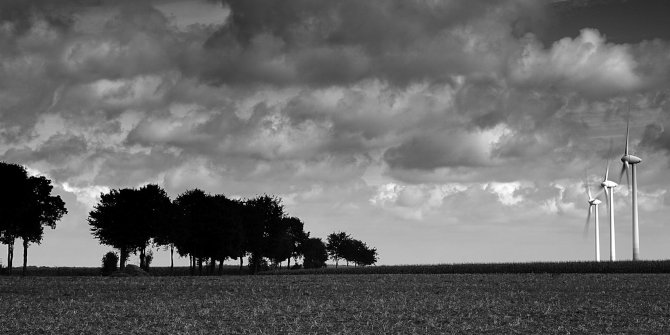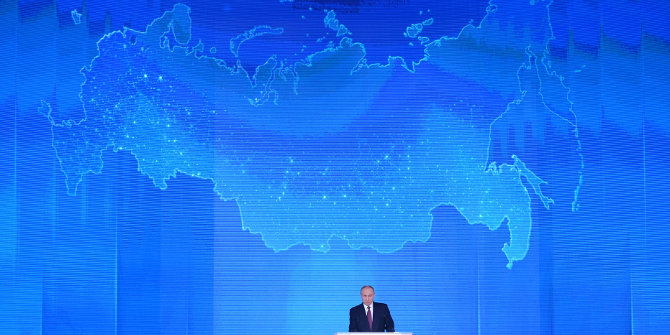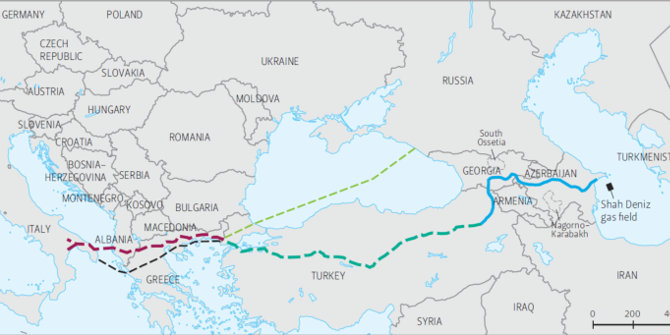 At the end of 2019, the European Commission announced a ‘Green Deal’ for Europe. Marco Siddi assesses the progress that has been made so far and highlights some of the potential legal, economic and policy challenges the Green Deal will have to overcome to be successful.
At the end of 2019, the European Commission announced a ‘Green Deal’ for Europe. Marco Siddi assesses the progress that has been made so far and highlights some of the potential legal, economic and policy challenges the Green Deal will have to overcome to be successful.
While Europe loosens Covid-19-related restrictions, the European Commission has stated that the post-pandemic recovery shall focus on the energy transition and its new flagship project, the European Green Deal. The Green Deal is a roadmap of policies for the EU’s climate agenda, based on which the Commission has started to develop legislative proposals and strategies. Commission President Ursula von der Leyen has made the Green Deal a priority of her mandate.
The Commission defined the Green Deal as a response to climate and environment-related challenges, as well as ‘a new growth strategy’ that shall lead the EU to become carbon neutral by 2050. This means that, by 2050, EU carbon emissions shall be balanced by at least equal levels of carbon removal from the atmosphere.
Advancing the EU’s climate agenda
The Green Deal builds on the complex framework of energy and climate policies that the European Union has developed over the last three decades. Currently, the EU’s climate and energy governance is structured around three main headline targets concerning greenhouse gas emission reduction from 1990 levels, the share of renewable energy in final energy consumption, and improvement in energy efficiency.
For the year 2020, the EU-level goal for each of the three headline targets is 20 percent. The EU has also adopted new targets for 2030: until then, it plans to reduce greenhouse gas emissions by at least 40 percent, increase the share of renewable energy to at least 32 percent and improve energy efficiency by at least 32.5 percent compared to 2007.
The Green Deal should lead the EU to agree upon more ambitious targets for the next decade. It reaffirms and enhances the EU’s commitment to the Paris climate agreement, which was adopted in December 2015 with the (main) goal of limiting the increase in the global average temperature to well below 2 degrees Celsius above pre-industrial levels.
How did the European Green Deal come about?
Several political and environmental factors may have influenced the Commission’s decision to prioritise the Green Deal. The climate crisis has become increasingly evident both in Europe and globally, as highlighted by repeated record high summer and winter temperatures, the melting of polar ice and glaciers and highly mediatised events such as the catastrophic forest fires in Sweden, Siberia and Australia in 2018-2019.

Credit: Erik Schepers (CC BY-NC 2.0)
In Europe, growing concern about climate change was reflected in stronger electoral support for Green parties in the 2019 European elections, especially in some larger western member states, as well as in the emergence of grassroots movements such as ‘Fridays for Future’ or ‘Youth Strike for Climate’. Moreover, the rise to power of climate change deniers such as Donald Trump in the US and Jair Bolsonaro in Brazil undermined global cooperation on tackling climate change. Trump’s decision to withdraw the US from the Paris climate agreement highlighted this risk.
By prioritising the Green Deal, von der Leyen gave a clear political direction to her mandate, possibly with the ambition to rally the support of both the European public and the different political actors that consider climate action essential. Recent Eurobarometer surveys have shown that European citizens are increasingly worried about the worsening climate crisis.
Unpacking the Green Deal
The Green Deal includes numerous strategies and plans, such as the Sustainable Europe Investment Plan, a new EU industrial strategy, a circular economy action plan, the new EU Biodiversity Strategy to 2030 and a ‘farm to fork’ sustainable agriculture strategy. The introduction of a carbon border tax is envisaged in order to prevent carbon leakage, namely the transfer of heavily polluting industrial production outside the EU, where it would not be subject to the same level of environmental restrictions.
The Green Deal also revives the idea of turning the European Investment Bank into ‘Europe’s climate bank’ through the preferential financing of green projects. In order to meet the higher costs of the energy transition for regions that are more reliant on coal, the Green Deal includes a Just Transition Mechanism and Fund.
Importantly, the Green Deal led to the drafting of a climate law that codifies the carbon neutrality goal by 2050. The law would empower the Commission to assess the progress made by member states towards the goal and to review the trajectory towards carbon neutrality every five years starting in 2023. It states that the Commission shall do this by ‘delegated acts’, namely without going through full negotiations with member states and the European Parliament.
Furthermore, the draft law proposes to explore options for a new greenhouse gas emission reduction target of 50-55 percent for 2030. Achieving ambitious emission reductions over the next ten years is essential to prevent catastrophic climate change. Hence, intra-EU negotiations on the new 2030 target will be an important test for the EU’s climate agenda.
What are the obstacles to the Green Deal?
The implementation and success of the Green Deal can be hindered by legal, economic and policy challenges. The climate law still needs approval from member states and the European Parliament. The Commission’s proposal to adjust targets by using delegated powers is likely to face opposition. Member states such as Poland and the Czech Republic are sceptical about the climate agenda and oppose ambitious goals.
Moreover, it is unclear whether the financial allocation for the Green Deal is adequate. The European Commission has promised that €1 trillion will flow into the Deal until 2030. However, according to the Commission’s own calculations, around €3 trillion will be necessary to meet ambitious emission reduction targets. The €1 trillion promised by the Commission largely comes from reshuffling existing EU money and from expected investments from the private sector and member states.
There are also concerns that funds may end up supporting projects that are not climate friendly but are presented as such by investors (a phenomenon called ‘greenwashing’). Furthermore, it is far from clear whether the promised just transition funds will reach the ‘losers’ of the energy transition.
The implementation of the Green Deal will require sustained international cooperation to ensure that emission reductions in Europe are not offset by higher emissions elsewhere. The introduction of a border carbon tax may hinder exports from the Global South and cause ‘tariff wars’ with other major economies. To prevent this, the EU will have to devise a mechanism that is compatible with international trade law, does not undermine the interests of the Global South and incentivises other major emitters to accelerate the energy transition.
Looking ahead: The post-Covid recovery programme and the Green Deal
Maintaining priority in the EU and national agendas is the most urgent challenge for the Green Deal in light of the Covid-19 emergency and the subsequent economic slowdown. So far, the Commission has continued to prioritise the green transition and even increased the allocation for the Just Transition Fund.
A further challenge stems from the international context. A victory for Donald Trump at the upcoming US presidential elections would have detrimental consequences for global efforts to tackle climate change. The EU should prepare for this eventuality. It should profile itself as the staunchest advocate of the Paris climate agreement and coordinate its implementation with other major powers.
This analysis is based on a Working Paper published by the Finnish Institute of International Affairs
Please read our comments policy before commenting.
Note: This article gives the views of the author, not the position of EUROPP – European Politics and Policy or the London School of Economics.
_________________________________
 Marco Siddi – Finnish Institute of International Affairs
Marco Siddi – Finnish Institute of International Affairs
Marco Siddi is a Senior Research Fellow in the European Union Research Programme at the Finnish Institute of International Affairs.




